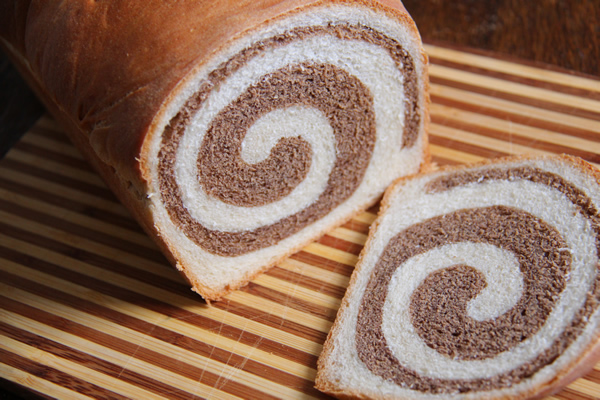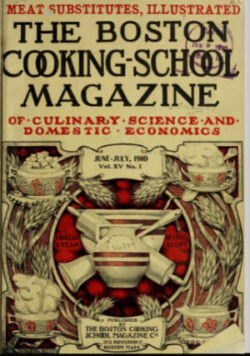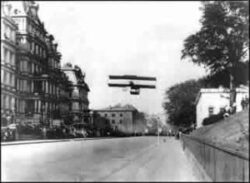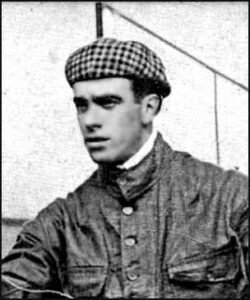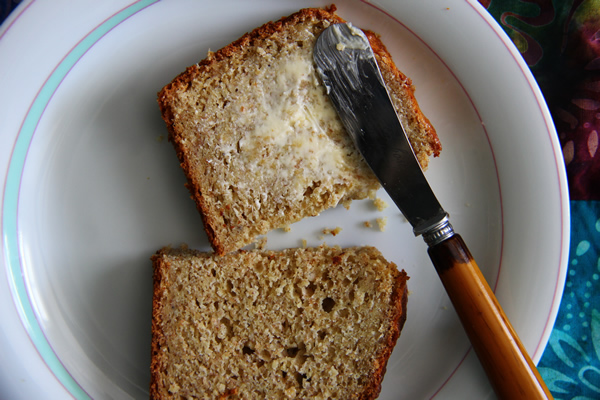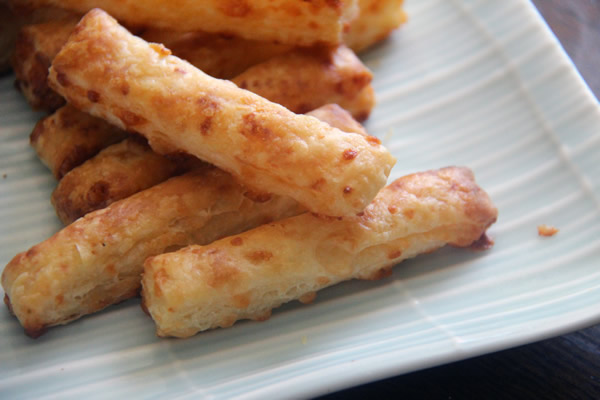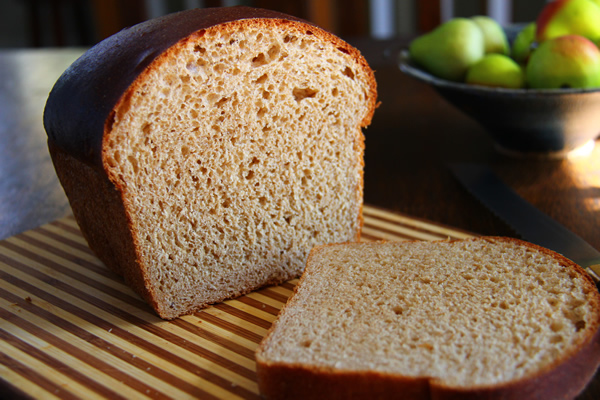Airplanes, automobiles and Seinfeld created American crazes—and brought two-toned bread along for the ride.
“Marble” or “marbled” bread usually refers to rye bread with a yin-yang swirl of light and dark. Two breads in one—what a luxury. It makes Reubens more Reubenesque. It draws us in with that hypnotic spiral. Seinfeld elevated a braided version of this deli specialty to an object of adulation and obsession in “The Rye” episode.
But a two-toned bread made of wheat generally just gets called “spiral.” Although it looks like marble rye and could probably substitute for it, hardly anyone calls it “marble wheat.”
Double Take Bread
Years ago, someone made a valiant attempt to give spiral whole wheat bread an identity with a recipe called “Double Take Bread.” Our copy of the recipe is so ancient, we haven’t a clue where it originated. And there’s not even a whiff of it on the Internet.
We discovered that, like marble rye, Double Take Bread makes a great sandwich even greater. It’s as tasty as it is striking, with a touch of whole-wheat nuttiness and hint of molasses. And since the recipe starts with a single batter, it’s easier to make than other two-toned loaves.
Aviation Bread
We know little about Double Take Bread, but we may have located its grandparent: a half graham, half white loaf called “Aviation Bread.” (See Grahammies: Great Homemade Graham Crackers for the story of Sylvester Graham and graham flour.)
The recipe for Aviation Bread, along with menus suggesting Aviation Bread-and-butter sandwiches, was featured in the January 1911 issue of Boston Cooking-School Magazine (Vol. XV, June-July 1910-May 1911, No. 6). Considering that the Wright Brothers made their first public flight in 1908, five years after Kitty Hawk, this loaf appears right at the dawn of the Age of the Airplane.
Americans were gobbling up news of daring pilots and the miracle of flight. Air races and aerial demonstrations drew huge crowds. With aviation mania spreading, it’s no wonder someone would name a food after the new craze.
But why this particular bread? Janet M. Hill, the magazine’s editor who wrote the “Seasonal Recipes” section that showcased Aviation Bread, offered no explanation.
If you’re a devotee of early flight, you may have figured it out. But we needed Wikipedia for a clue.
We found the answer in a review of 1910 aviation highlights. On October 14, an English aviation pioneer landed a biplane in Washington, DC, on a narrow avenue bordering the West Wing of the White House. Thrilled onlookers applauded, and President Taft’s Secretary of War took the daredevil to lunch. The Washington Post called this exploit “the most remarkable and daring landing ever made from such a height by an aviator, either native or foreign.”
The pilot’s name was Claude Grahame-White.
Grahame-White had already gained celebrity as a fearless aeronaut who was winning air races and breaking records. Prince Charming in fashionable flight wear, he was also winning and breaking hearts. When he came to Boston in September 1910 to compete in the Boston-Harvard Meet, journalist Phoebe Dwight called him the “daring and spectacular young man who has won the title of the matinee idol of the aviation field.” Smitten (and apparently wealthy) women paid $500 for a five-minute flight with their handsome hero.
So, Boston Cooking-School Magazine celebrated him and his latest escapade by publishing a graham/white bread recipe called Aviation Bread. Everybody got the joke.
Grahame-White went on to form an aircraft company and rack up many firsts. He was still making headlines in the 1920s when cookbook author May E. Southworth peddled Aviation Bread to another new breed of adventurers: motorists.
Automotive Meals
Automobiles had recently crossed the line from horseless buggies into closed-bodied vehicles with attractive curves, standardized controls, and powerful engines. Southworth, recognizing the birth of the American road trip, wrote The Motorist’s Luncheon Book (New York, Harper & Brothers, 1923).
“The love of the great outdoors grows with each new automobile,” she wrote. For motorists “yielding to the lure of the gypsy trail,” she offered menus and recipes to keep their “joy hampers full,” avoiding the chance of their “perishing just outside the gates of some woodsy paradise.”
Southworth recommended Aviation Bread-and-butter sandwiches for a destination picnic or camping trip. Her skimpy 45-word bread recipe, however, left out all details and ended in the frustrating instruction: “bake in the usual manner.”
Our recipe for half wheat, half white bread spells it all out, so it’s easy to recreate a stunning and delicious loaf that pays tribute to a major figure in the Pioneer Era of Aviation.
Note: Special thanks to The Sifter, the food history research website where we discovered Aviation Bread.
Double Take Bread (Aviation Bread)
Recipe doubles well
Most two-tone bread recipes call for mixing two separate doughs. This one starts with a single batter, which we divide in half and then add in what we need to make the two variations. Using this one batter helps the two doughs rise at about the same rate, so that the yin fuses nicely to the yang.
- 2 ¾ cups all-purpose flour
- 2 ½ teaspoons instant dry yeast (SAF Gold Yeast recommended because of the sugar in the dough)
- 1 ½ cups milk
- 3 tablespoons sugar
- 3 tablespoons oil
- 1 ½ teaspoons salt
- 2 tablespoons molasses
- 2 teaspoons unsweetened cocoa (for color)
- 1 ¼ cups whole wheat flour
- In large mixing bowl, combine 1 ¼ cups of all-purpose flour and yeast.
- In a saucepan or in a bowl in the microwave, heat milk, sugar, oil and salt just until warm.
- Add the liquid to the dry mixture. Beat at low speed for ½ minute, scraping bowl. Beat 3 minutes at high speed. There will be about a pint of batter.
- Pour half of the batter into another bowl and set it aside.
- To the first half, stir in enough remaining all-purpose flour (about 1 ½ cups) to make a moderately stiff dough. Turn out onto floured surface and knead till smooth and elastic, 5 to 8 minutes. Shape into a ball. Place in a well greased bowl; turn once to grease surface. Set aside.
- To the remaining half of the batter, stir in molasses, cocoa and whole wheat flour. Turn out onto floured surface knead till smooth and elastic, 5 to 8 minutes, kneading in enough additional flour to make moderately stiff dough. Shape into a ball. Place in well-greased bowl; turn once to grease surface. Let both doughs rise in warm place till double, 1 to 1 ¼ hours. Punch both down; cover and let rest 10 minutes.
- Roll out each into a 12×8-inch rectangle. Place dark dough on top of the light; roll up tightly into a loaf, beginning at short side, and pinch bottom seam. Do not pinch ends.
- Place in greased 9x5x3-inch loaf pan, seam side down. Cover; let rise until nearly double, 45 minutes.
- Bake in a preheated 375° oven for 30 to 35 minutes. You may need to cover with foil after 20 minutes to prevent over-browning.
- Remove from pan; cool. Makes 1 loaf.

